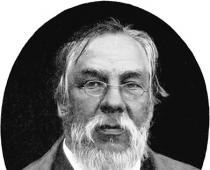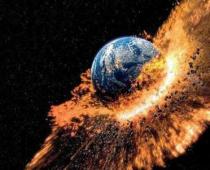Borisova Alena, Demina Ekaterina, Sokolova Ekaterina, Marusev Alexander
The regional scientific and practical conference “Researcher of the XXI” century was held on the basis of our school. Students from all classes presented their projects. The topic of our project was called “Photography history and modernity.” The children became interested in the history of the development of photography, a type of photography. Did you find out what the role of photography is in the life of society? Working on the project was interesting and exciting.
Download:
Preview:
Topic: Photography: history and modernity
Goal: to find out what place and role photography occupies in the life of a person and society.
Tasks:
1) get acquainted with the history of the development of photography
2) show how photography is developing at the present stage
3) show the importance of photography in the development of other sciences
Living your life sinfully and holy,
recently the inhabitants of the earth,
having invented cameras,
the guarantee of immortality has been found.
What is a mirror?
One moment
one minute is up
and the cold of oblivion blows
from the empty glass.
And the photo is raw,
product of skillful labor,
our appearance exactly matches
and fixes it forever.
Yaroslav Smelyakov.
1.History of the development of photography
We are so accustomed to photography, which has become our “second sight”, that we almost don’t think about what its place is in the life of modern society, or we simply don’t notice it as the most ordinary phenomenon.
Photography has long been recording the most diverse events in a person’s life from the day of birth to old age, creating a unique photo chronicle of his life. We carefully preserve photographs of our friends, loved ones, relatives, and deceased grandfathers and great-grandfathers. Photography has taken a prominent place in the spiritual culture of modern society as one of the art forms. It is difficult to imagine any field of science without scientific photography.
This explains the importance of studying photography and the history of its development. And with the improvement of photographic technology, the spread of electronic and digital technologies, the issue of studying photography is becoming especially relevant.
And where did it all begin??? Let us turn to the history of the development of photography
The first person to whom the credit for the first steps in creating the camera belongs was the Arab scientist Ibn al-Haytham. The scientist took a square box and made a hole in one wall, opposite which several candles were placed. Alhazen (as he was called in Europe) is credited with the discovery, the essence of which is that if an opaque object is placed in front of the hole, then an inverted image of candles can be seen on the object. This discovery, 200 years later, was called a camera obscura (another name for “dark chamber”). Ibn al-Haytham is recognized as the person who invented the first camera.
The next stage in the development of photography dates back to 1725, when Johann Heinrich Schulze (1687-1744), a physicist, received an image on silver-plated chalk in 1725. His discovery gave impetus to a series of experiments in chemistry that, 100 years later, led to the invention of photography.
The inventor of photography is considered to be the Frenchman Joseph Nicéphore Niepce, who in 1826 took the first photograph “View from a Window”; the exposure lasted 8 hours in bright light on a tin plate covered with asphalt. The image is embossed and easy to multiply. As we can see, the image quality left much to be desired. But this was a giant step towards the further development of photography.
Soon in 1839, the Frenchman Louis-Jacques Mandé Daguerre published a method for producing an image on a copper plate coated with silver. The plate was treated with iodine vapor, as a result of which it was covered with a photosensitive layer of silver iodide. After thirty minutes of exposure, Daguerre moved the plate to a dark room and held it for some time over heated mercury vapor. Daguerre used table salt as an image fixative. Daguerre called his method of obtaining a photographic image daguerreotype. Daguerreotype was the beginning of the history of the development of photography as a new way of human interaction with the reality around him
Almost at the same time, the Englishman William Henry Fox Talbot invented a method for producing a negative image, which he called colotype (paper was impregnated with silver chloride, after exposure a negative was obtained). Exposure time 1 hour. The method allows you to multiply any number of positives from a negative.His invention further popularized photography among the masses.
The next step was the invention of color photography in the mid-19th century.
On May 17, 1861, the great English physicist James Maxwell obtained the world's first color image using photographic methods. Thus, he proved the three-component (red, green and blue colors) theory of vision and showed the way to create color photography.
In Russia, the practical use of light painting began literally in the first months after the promulgation of the principles of photography. Russian scientists not only showed keen interest in the discovery of photographic processes, but also took a fruitful part in their study and improvement.
In Russia, the first photographic images were obtained by the outstanding Russian chemist and botanist, academician Julius Fedorovich Fritzsche (1802 - 1871). These were photograms of plant leaves, made using the Talbot method.
In 1889, the name of George Eastman Kodak appeared in the history of the development of photography, who patented the world's first film in the form of a roll, and later the Kodak camera, suitable specifically for this film. In the future, the name "Kodak" became the brand of a large company.
The most interesting things began in the 20th century. In 1903, the Lumière brothers created the “autochrome” process, in which exposure lasted 1-2 seconds in good light, and a color positive was obtained on the plate.
In 1935 The Kodak company mass-produces Kodakchrome color photographic films. But for a long time, when printing, they had to be sent for revision after development, where color components had already been applied during development.
In 1963 The idea of fast photo printing is turned upside down by Polaroid cameras, where the photo is printed instantly after the photograph is taken with one click. It was enough just to wait a few minutes for the outlines of the images to begin to appear on the blank print, and then a full color photograph of good quality appeared. It would take another 30 years for Polaroid's versatile cameras to dominate the history of photography to give way to the era of digital photography.
In 1980 Sony is preparing to launch the Mavica digital video camera. The captured image was stored on a flexible floppy disk, which could be erased endlessly for a new recording.
The first full-fledged digital camera was released by Kodak in 1990.
At the present stage, photography is developing at a rapid pace. The arsenal of photographers is increasingly expanding.
2. Genres of photography
Today everyone has the opportunity to take beautiful pictures of themselves and add to their home photo archive.. The process of development of photography has gone so far, photography has its own genres and varieties. We can say that photography is becoming an art form. Some modern photography genres repeat the corresponding genres of painting, while others are specific only to photography. Let's look at some genres of photography.
1) The nature surrounding man has long worried him and delighted him with its beauty and grandeur. A genre of fine art that reproduces natural or man-made nature is called landscape. In landscape photos, forests and fields, meadows and mountains appear before the viewer, that is, natural nature.
2) The genre of portrait photography is popular today.
3) Macro photography is also relevant these days - a type of photo, film or video shooting, the peculiarity of which is to obtain images of an object on a scale of 1:5-20:1
3. The role of photography in the development of other sciences
Photography has given us not only new vibrant forms of art, but has also found great application in science, industry, and trade. Currently, there are no areas of human activity where photography is not used or cannot be successfully used. This is natural, because many millions of people of various professions constantly have to deal with photography in one form or another.
Photography plays a major role in the development of astronomy, biology, chemistry, geography, geology, and medicine (this is how the first X-ray image appeared in 1896, exactly 70 years after the first photograph). Photography penetrates everywhere - from the world of molecules and atoms to the world of ultra-distant stars. At the same time, she not only observes and records, but also explores, helping scientists penetrate the secrets of the invisible and inaccessible.
And of course, photography helps us capture both happy and tragic moments in history.
What is the role of photography in the lives of modern schoolchildren? To answer this question, we conducted a survey among students in grades 7-11 of Taldom Municipal Educational Institution Secondary School No. 3 and here are the results:
80% of students believe that photographs are memories of joyful events in their lives.
15% that photography is an art form.
5% believe that photography is a good way to express yourself.
As a result of our research, conclusions were drawn.
The history of the development of photography is interesting and fascinating. Photography is an integral part of human life - both in everyday life and in science.From birth, photography accompanies a person throughout his life,
Photography is a good way to remember and refresh the story of his life!!!

Photography (French photographie from ancient Greek φως / φωτος - light and γραφω - writing; light painting - technique of drawing with light) - obtaining and saving a static image on a photosensitive material (photo film or photographic matrix) using a camera.
Also, a photograph or photograph, or simply a snapshot, is the final image obtained as a result of the photographic process and viewed directly by a person (this means both a frame of developed film and an image in electronic or printed form).
photography is the art of taking photographs, where the main creative process lies in finding and choosing the composition, lighting and moment (or moments) of the photograph. This choice is determined by the skill and skill of the photographer, as well as his personal preferences and taste, which is typical for any type of art.

Main genres in photography as art
1. Night photography – night photography. Night photography involves taking photographs at night and the actual frames obtained during this shooting. Considering that at night there is not enough light for photography, the photographer must use long shutter speeds, fast lenses, and high ISO sensitivity values.

2. Portrait
3. Still life

4. Mobilography – appeared at the beginning of the twenty-first century. It is produced by cameras built into household appliances, these can be mobile phones, pocket personal computers, lighters, binoculars. Due to the low resolution, photographs taken with such cameras are of very low quality, but they can be interesting because they are taken from an unusual angle or taken spontaneously. In this genre of photography, what is important first of all is what is shown in the picture, and not what quality the photograph is. Several art projects in the “mobilography” genre have already been created in the modern gallery space.


6. Reporting – news photography – is the prerogative of photojournalists who photograph various events from local to global scales. Requires the photographer to quickly build a composition and instantly react to changes in the situation.
7. Documentary photography – documentary photography. Any type of photography can fall into this genre if it documents events or an object. But recently the media have changed their requirements for documentary material. Documentary photography has today given way to photojournalism. Often, photographs taken by documentarians have not only documentary, but also artistic value. The works of such photographers can be seen in galleries, books, and art photo albums.




11.Panoramic photography – panoramic photography – this includes photographing various panoramas.
Rules for taking photographs:
1- choice of plot - The author has the right to be proud of an interesting and unusual plot. The hunt for such stories takes
a lot of time and sometimes turns into mania. If you're one of those people who always keeps a camera handy,
There's nothing to worry about. The main thing is to always look around and see beauty in the most ordinary scenes.

- Macro photography opens up unprecedented scope in choosing a subject. A drop of water, an insect or a flower delights the viewer who is not accustomed to examining small objects in detail.
2. Selecting a shooting point Walk around the model, noting the features of the background. This way you will get rid of “bad” items that cannot be hidden in any other way. A striking example is the nondescript lampposts and power lines that have ruined more than one photograph throughout history.


3. Features of visual perception
We are used to reading from left to right and from top to bottom, and gravity emphasizes that downward movement is natural. This greatly affects perception. If the picture contains the same or similar objects, then the one on the left will dominate. The object located at the top of the photo appears heavier than the one below. A vertical line appears longer than an identical horizontal line.

4. Psychology of lines
Lines of force are the contours of objects located in the image. In black and white photographs they are more pronounced, since our gaze is not distracted by a large number of colors. This effect is often used in artistic photography. It’s not for nothing that professionals love to take black and white photographs.
With the help of lines, an experienced photographer is able to control the viewer's gaze, directing him to the important details of the photo.
5. Balance in composition

6.Golden ratio
If you draw two lines horizontally and vertically on a photograph, each of which separates a third of the photograph, you will get four lines of the “golden ratio” and four points of their intersection. The zone located between these lines is perceived as the calmest, and the gaze primarily fixes objects located on the lines themselves and at the intersection points.
7.Composition

Take a photo using basic rules

© Fokina Lidiya Petrovna It took photography a long time to win its own place in the world of art. When the first photographs appeared, no one took them seriously; they were considered “pampering” for a limited circle of people. Then, due to its technical limitations, photography could not lay claim to either documentary or any artistic value. At that time, photography was viewed as a copy of reality, akin to artistic painting. Although photography for a long time could not emerge from the shadow of painting, its development was facilitated by photo exhibitions, where people, along with simply beautiful shots, could also see quite interesting photographs. One of the first such exhibitions was organized by Alfred Stieglitz in New York in 1905. In the 20s-30s of the twentieth century, with the advent of newspapers and magazines, a new period began in photographic art, photography began to change its style in favor of documentary. With the advent of digital cameras, computers and graphic editors, the photographer has the opportunity to transform and convey his photographs to the viewer as he sees them. Nowadays there are many genres of photography. Here are some of them:

© Fokina Lidiya Petrovna Night photography involves photographing at night and the frames obtained during this shooting. Considering that there is not enough light for photography at night, the photographer must use long shutter speeds, fast lenses, and high sensitivity values.













© Fokina Lidiya Petrovna It took photography a long time to win its own place in the world of art. When the first photographs appeared, no one took them seriously; they were considered “pampering” for a limited circle of people. Then, due to its technical limitations, photography could not lay claim to either documentary or any artistic value. At that time, photography was viewed as a copy of reality, akin to artistic painting. Although photography for a long time could not emerge from the shadow of painting, its development was facilitated by photo exhibitions, where people, along with simply beautiful shots, could also see quite interesting photographs. One of the first such exhibitions was organized by Alfred Stieglitz in New York in 1905. In the 20s-30s of the twentieth century, with the advent of newspapers and magazines, a new period began in photographic art, photography began to change its style in favor of documentary. With the advent of digital cameras, computers and graphic editors, the photographer has the opportunity to transform and convey his photographs to the viewer as he sees them. Nowadays there are many genres of photography. Here are some of them:

© Fokina Lidiya Petrovna Night photography involves photographing at night and the frames obtained during this shooting. Considering that there is not enough light for photography at night, the photographer must use long shutter speeds, fast lenses, and high sensitivity values.












- In contact with 0
- Google+ 0
- OK 0
- Facebook 0








